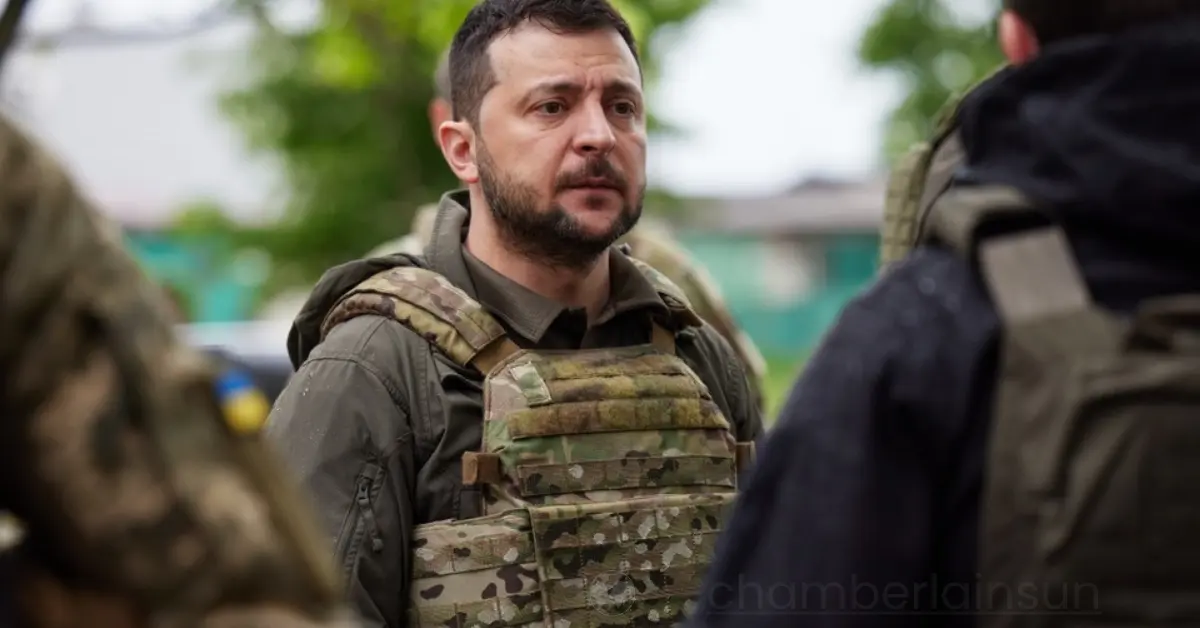KYIV, Ukraine – In a bold diplomatic move, Ukrainian President Volodymyr Zelenskyy announced on Tuesday a new four-part plan aimed at ending Russia’s years-long war on his country. The proposal, while short on specific details, represents a significant shift in Ukraine’s approach to resolving the conflict and seeks to leverage international support to pressure Russia into negotiations.
The Four Pillars of the Plan
President Zelenskyy’s strategy rests on four key components:
- Continued Incursion into Kursk: Ukraine plans to maintain its recent offensive into Russia’s Kursk region, where Ukrainian forces currently hold over 500 square miles of territory. This move aims to draw Russian troops away from the eastern Ukrainian frontline.
- Ensuring “Security Architecture”: While vague, this element likely refers to Ukraine’s aspirations for NATO and EU membership, which would provide significant security guarantees and economic support.
- Receiving a “Powerful Package”: Zelenskyy is expected to request additional weapons from allies, potentially including permission to use these arms in Russian territory – a move previously forbidden.
- Advancing an Economic Component: Though details are scarce, this aspect likely involves increased sanctions on Russia to further pressure its economy.
Seeking International Backing
President Zelenskyy plans to present his proposal to key U.S. figures in September, including President Joe Biden, Vice President Kamala Harris, and former President Donald Trump. “The success of this plan depends on [Biden],” Zelenskyy stated, underscoring the critical role of U.S. support in Ukraine’s strategy.
Russian Rejection and Ongoing Hostilities
The Kremlin has swiftly rejected the notion of diplomatic negotiations. Dmitry Peskov, the Kremlin spokesperson, declared on Tuesday that “The topic of negotiations at the moment has pretty much lost its relevance.”
Even as Zelenskyy announced his peace plan, Russia launched multiple air attacks against targets in southeastern and central Ukraine, including Zelenskyy’s hometown of Kryvyi Rih, where at least two people were killed in a hotel strike.
Challenges to Peace
Experts note several significant obstacles to the plan’s success:
- Russia’s outright rejection of negotiations
- The plan’s reliance on continued military action
- Lack of specific proposals for territorial disputes or political concessions
- The risk of further escalation and prolonged conflict
Potential Paths Forward
Despite these challenges, some experts see potential avenues for progress:
Jennifer Kavanagh, senior fellow at Defense Priorities, suggests that third parties like India or Turkey could play a crucial mediating role. Indian Prime Minister Narendra Modi has reportedly offered to help with negotiations and urged Russian President Vladimir Putin to seek a peaceful resolution.
William Courtney, an adjunct senior fellow at RAND, proposes that a resolution might take the form of a sustained ceasefire rather than a total surrender or political settlement. However, he cautions about Russia’s history of violating international commitments.

Broader Implications
Zelenskyy’s peace plan serves several important purposes beyond its stated goal:
- It positions Ukraine as actively seeking a resolution, potentially garnering more international support.
- It indirectly pressures Western allies to increase their military support.
- It provides a vision for ending the conflict, which could boost morale among Ukrainian citizens and soldiers.
- It helps keep Ukraine in the global spotlight as the war drags on.
Conclusion: A Complex Path to Peace
President Zelenskyy’s new plan to end the war represents a significant diplomatic effort, but it also highlights the complex challenges facing Ukraine. The proposal’s heavy reliance on military pressure and international support, coupled with Russia’s outright rejection of negotiations, suggests that a peaceful resolution remains a distant prospect.
As the conflict enters its third year, Zelenskyy’s plan serves as a reminder of the urgent need for a diplomatic solution. However, it also underscores the harsh reality that any path to peace will likely require further military action and international pressure on Russia.
The coming months will be crucial in determining whether this new initiative can gain traction or if it will join the growing list of failed attempts to end this devastating war. For now, the world watches and waits, hoping for a breakthrough that can bring peace to Ukraine and stability to the region.
The success of Zelenskyy’s plan ultimately depends on a complex interplay of military developments, international diplomacy, and the willingness of all parties to engage in meaningful negotiations. As Ukraine continues its fight for sovereignty and territorial integrity, the international community faces the ongoing challenge of supporting a peaceful resolution while maintaining pressure on Russia to end its aggression.

